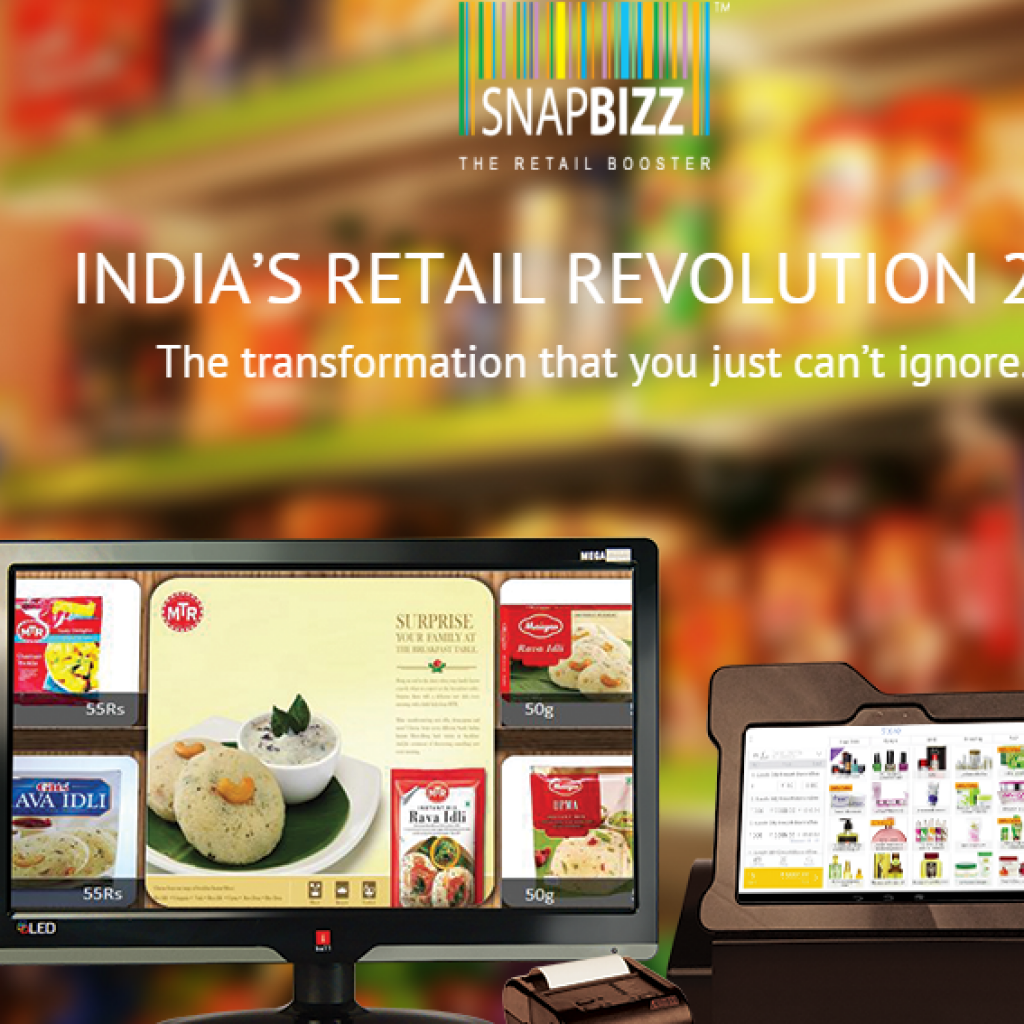
I recently caught up with SnapBizz co-founder, Yash Prakash to hear his amazing story of transitioning an idea originating in a corporation to a thriving startup.
Act 1: The promising beginning
When Qualcomm started its VentureFest intrapreneurship program back in 2006 (now called ImpaQt), it unlocked the floodgates of leadership, creativity, and innovation from unexpected places and people. While running the program, I never really saw an idea or intrapreneur that I didn’t like, but I found proposals out of Qualcomm’s foreign offices to be particularly illuminating, as they were addressing unknown opportunities to most of us working in the US.
One such proposal originated in Qualcomm’s (fantastic) set of India offices. This is the story of CellNSell (internal project name), which was the inception of the formation of today’s SnapBizz, one of the fastest retail technology startups in Asia.
Yash was actually a US-based co-founder of CellNSell, a key liaison for a team otherwise based in India and unable to network as efficiently amongst Qualcomm’s power center in San Diego. Yash and team spotted a $1 Billion + opportunity in India that many of us would never imagine: Bring affordable connectivity and software business tools to the huge, ‘unorganized’ retail sector. For those of you that might not be familiar, the retail industry in India is divided into two segments – organized and unorganized.
Unorganized retail segment refers to traditional low-cost government registered retail shops, aka Mom and Pop stores including neighborhood grocery stores (Kirana stores), push carts, small restaurants, etc. The retail industry in India is predominantly occupied by these unorganized players, accounting for nearly 96% of the $500 Billion Indian retail market (over 20 Million shops)!
Without affordable connectivity, business tools, POS, and in-store advertising systems, unorganized retail shop owners miss out on much higher potential levels of customer service and profits, often suffering from under or overstock issues and missed sales opportunities. Customers suffer from wasted trips to stores, and product makers suffer from being completely in the dark on inventory levels or customer interest in their products and promotions. Available solutions are typical ‘overkill’, meant for organized retail.
Leveraging the economies of scale inherent in the wireless supply chain, the internal Qualcomm team, CellNSell, proposed a creative and affordable retail POS system that could solve most of the store management problems faced by the unorganized sector. In addition, the system would be scalable to allow for customer relationship management and other value-added services.
Act 2: The bumpy middle
The idea was well received at Qualcomm but failed to make it to the top 3 funded ideas of the VentureFest competition. Yash, who was passionate about the idea, refused to give up. He convinced executives of the Global Market Development Business Unit to allow him some time to sharpen the idea’s value proposition, business model and the all important strategic fit to Qualcomm.
He was able to convince his executive supporters to fund an MVP and transactional learning pilot in India with several unorganized retail stores. Yash ran the pilot program, collected customer feedback and eventually recommended the path forward to scale the business. The pilot’s transactional learning KPI’s were off the charts – the customers loved the solution and saw significant impact to their bottom line – they couldn’t wait to purchase a system after seeing the light!
But here is where the story hits a bump in the road (it wouldn’t be a good story otherwise)! Although the project team was successfully proving the business opportunity for a retail service business in India for Qualcomm, it could not overcome other opportunity costs for the company and the lack of business-building infrastructure in the region. It is at this juncture that both a company and its intrapreneurs usually give up on an idea – not in this case – both stepped up to the challenge!
Act 3: The happy ending
Yash respected Qualcomm’s decision to not own and scale the business. After the internal council, he put together a team to take the project to market along with a co-founder Prem Kumar from India. Yash orchestrated a spinout of the project from Qualcomm into a startup. Armed with a strong idea, proof of concept (traction/data) and Qualcomm’s support, Yash co-founded SnapBizz and incorporated in Singapore.
SnapBizz was able to quickly raise a seed capital round from institutional investors including the Singapore Government and Qualcomm. Although SnapBizz started with a simple idea to enable merchants with a good-enough connected POS, it gradually matured its product offerings and now features advanced consumer engagement and data analytics features that rival the best solutions available in the organized sector, but still at a fraction of the cost.
A venture that started with two people now has over 120 (in India and Singapore). Its innovative retail IoT platform connects every stakeholder in the retail industry in India from top Tier 1 Brands, Agencies, Merchants, Distributors, Shoppers, Banks, Payment Providers, and most recently, Cash-n-Carry and eCommerce providers. SnapBizz now serves customers across 8 cities in India with plans to grow into the top 50 cities soon.
Furthermore, Consumer Packaged Goods (CPG) brands in the region are thirsting for SnapBizz’s ‘last-mile’ customer data, not only to improve their In-Store Marketing ROI, but also to optimize their entire supply chain, which they were never able to access before SnapBizz came along creating an IoT of Retail, for everyone.
Lessons Learned:
- Corporations should exploit the untapped the potential of employee ideas, near and especially far from their corporate HQ
- An intrapreneur’s journey can turn into an entrepreneur’s journey (and perhaps back around)
Corporations shouldn’t waste ideas that don’t fit their strategic agenda – let them have a chance in the outside world
- Corporations should have a formal process for spinning off ideas – especially those coming from employees (the more exit possibilities, the more ideas, the more ideas may fit the strategic agenda)
Nothing like disruptive ideas that fight non-consumption. Try to help the have-nots, you’ll be rewarded no matter what.
 About Author: Ricardo dos Santos is a leading expert on Innovation & Entrepreneurship with more than 20 years of experience driving ventures at major corporations and forming technology startups. Ricardo is the creator of Collective Entrepreneurship, a practice combining crowdsourcing with the power of self-forming teams to discover, network & accelerate breakthrough ideas
About Author: Ricardo dos Santos is a leading expert on Innovation & Entrepreneurship with more than 20 years of experience driving ventures at major corporations and forming technology startups. Ricardo is the creator of Collective Entrepreneurship, a practice combining crowdsourcing with the power of self-forming teams to discover, network & accelerate breakthrough ideas
